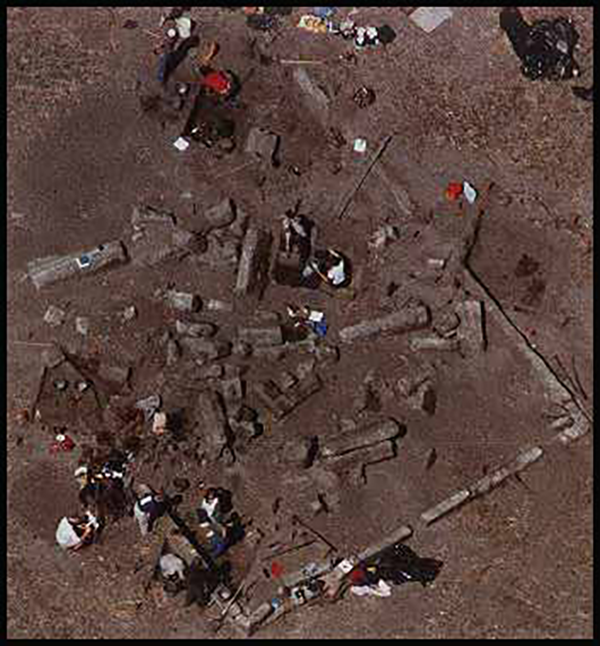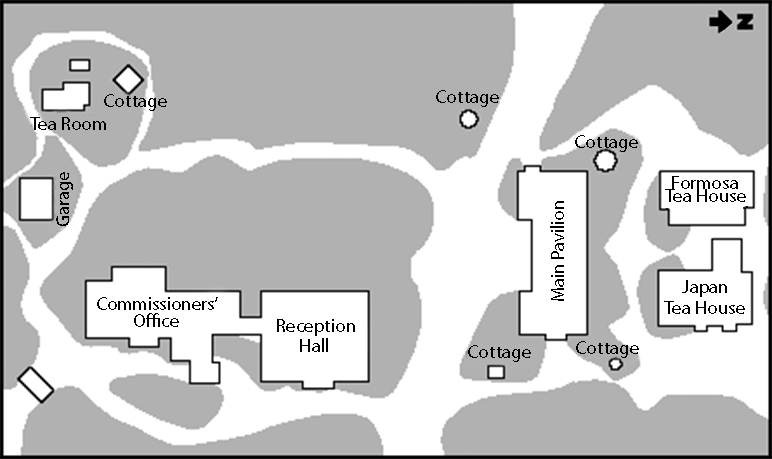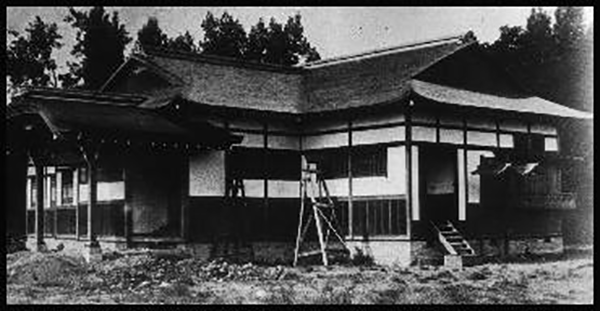tea-house
LOCATION
The Japanese Commissioners' Office site (JCO) is located on the property of the Ardenwood Historic Farm of the East Bay Regional Park District in Fremont. The site consists of the concrete ruins of a Japanese structure reassembled on the George Patterson Farm (Ardenwood) in 1917, burned in 1941, and destroyed by heavy equipment in the early 1980s.
FIELDWORK
The site was mapped and excavated in 1988 by students enrolled in CSUEB's Field Archaeology class under the supervision of Professors George R. Miller and Anne Gill. The excavation of six 2 meter by 2 meter units was combined with an extensive archival research program to determine the exact nature of the building and its use between 1917 and 1941.
CHRONOLOGY
1917-1988 based on historic documents. The architecture of the building was based in a large degree on the Rokuon-ji temple, built at Kyoto in 1397.
SIGNIFICANT FINDS
Archival research concerning the origin of the Japanese ruins at Ardenwood proved to be just as important to this project as did the excavation:
- When the Ardenwood project was initiated the ruins in question were known by the East Bay Regional Park staff at Ardenwood as the "Teahouse Ruins" based on the oral tradition that Mrs. Patterson had purchased a Japanese teahouse from the Panama Pacific International Exposition of 1915. Through archival research it was determined that the Ardenwood structure, rather than being a modest teahouse, was actually a multi-room, 4185 sq. feet office that had housed the Japanese commissioners to the Exposition. The entire material for this building had been shipped from Japan to San Francisco and set up, along with several other buildings, by Japanese carpenters. In 1916, after the Exposition had closed and the buildings were scheduled for demolition, Mrs. Clara Patterson Layson (the widow of George Patterson) purchased the Japanese Commissioners' Office and had it shipped down the Bay by barge to the Ardenwood farm in Fremont. In 1917 Mrs. Patterson contracted the famous Bay Area architect, Julia Morgan, to draw up plans for remodeling of the structure to be used as a residence. Due to Mrs. Patterson's death in 1917, the remodeling plans were never completed, but had they been, Mrs. Patterson would have possessed a dwelling with three bedrooms (each with its own full bathroom), a kitchen with abundant storage, living room with fireplace, formal dinning room, sewing room and a subterranean garage.
- The excavation of the "Teahouse" ruins in 1988 produced three major results: 1) a better understanding of the relationship between the surviving ruins and the original structure, 2) a sample of ceramic architectural artifacts that adorned the structure before its destruction in 1941, and 3) a clearer sense of the way in which the site was utilized between 1941 and the present.
- Excavations conducted next to the foundation walls of the ruin demonstrated their maximum depth to be 33 inches below grade, thus disproving the existence of a full basement in the 1917 remodel. The exposed foundation conforms generally to the shape of a rectangular "U." Superimposing the existing foundation plan over the floor plan of the Japanese Commissioners' Office at the Panama Pacific Exposition demonstrates an almost perfect fit with the northern portion of the original building in the area where it was joined to the Reception Hall and where the gracious entrance way one stood.
- The most abundant artifacts found in the JCO excavation were ceramic roofing and facing tiles. The most distinctive of these were black ceramic cylinders each with one highly decorated disc-shaped end.
PUBLICATIONS:
Miller, George R. - 1988
Preliminary Report of the Excavation of the Teahouse Ruins, Ardenwood Historic Farm, Fremont, California. A report submitted to the East Bay Regional Park District and on file at the C.E. Smith Museum of Anthropology.


